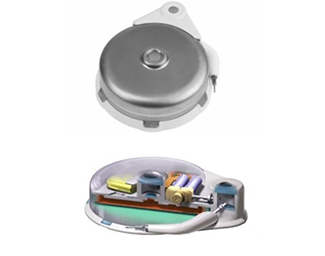CASE STUDY
Class III Implantable Drug Delivery Pump

Medical Condition/Clinical Need
Develop an implantable drug delivery pump system with a programmable adjustable flow, ranging from 0.10 ml per day to 28 ml per day and a 10-year implant life.
The Challenge
Designing and manufacturing a Class III active implantable pump presents multiple challenges. These challenges include selecting materials that are both biocompatible and drug compatible (which are critical in minimizing the risk of immune reaction), deep tissue thrombosis post-implementation, or drug stability. The processing of these materials should also be taken into consideration (i.e., maintaining cleanliness and reducing contamination). Design miniaturization is crucial to the success of the device, as it addresses patient comfort and enables minimally invasive practices.
The devices’ durability and reliability are essential for long-term function. This requires a robust engineering design with secondary backup seals or systems to meet patient safety requirements and regulatory needs. The device was then put through a rigorous test plan(s) to verify and qualify every design input. Furthermore, power consumption was minimized to extend battery life during the pump communication, programming, and operation processes. Finally, the pump had to be compatible and safe to use alongside other therapies that the patient might need over the product’s lifetime.
The Design/Manufacturing Solution
The Arterex engineering team developed a novel flow metering system, where a controlled pulse accumulator is sandwiched between two micro valves. The pump design utilizes biocompatible titanium alloy and two solenoid valves. The pump’s compact size is achieved through advanced microfabrication techniques, allowing for subcutaneous implantation in the abdomen and then tunneling the attached catheter to the location of the predetermined drug delivery site.
A hermetically sealed titanium housing protects the internal components from the body’s environment and separates electronic system from the drug flow path. Communication with the device is performed by matching telemetry coils in the pump and the use of a handheld programmer. Manufacturing involves stringent quality control processes, including cleanroom assembly, laser welding, and comprehensive functional testing.
Results
The overall completed product was designed, developed, validated and verified at Arterex. Due to CE and FDA approvals that were issued, the device is manufactured at Arterex. Arterex manages the sustaining engineering of the projects, keeping the design up to regulatory compliance and controlling multiple end-of-life issues. Additional aftermarket and shipping distribution(s) are services Arterex continually performs during the duration of this program.
